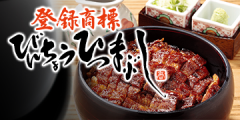- Home
- Sightseeing Spots
Sightseeing Spots
1 - 7 / 7 RESULTS
-
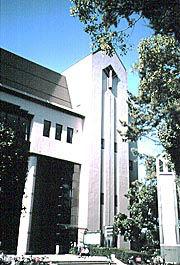
Western Area
Nagoya City Hideyoshi Kiyomasa Memorial Hall
The exhibition items are mainly related to the acts of Toyotomi Hideyoshi and items regarding the era, from the period when Toyotomi Hideyoshi served under Oda Nobunaga until when the Toyotomi Family was defeated at the Summer Battle of Osaka Castle. The exhibitions regarding warlords born in the Owari region including Kato Kiyomasa are also held. Several video programs are available to visitors. See More
The exhibition items are mainly related to the acts of Toyotomi Hideyoshi and items regarding the era, from the period when Toyot…See More
-
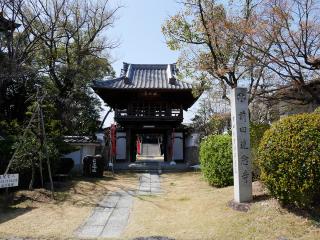
Western Area
Maeda Sokunenji (Maeda Castle Ruin)
This location is believed to be the origin of the Maeda clan. It houses the tomb of Maeda Kojuro, the former lord of Maeda Castle, along with the tombs of successive generations of the Maeda family and a monument dedicated to Maeda Village. The gate's signboard bears the name "Baionji Temple," and the area is adorned with the Maeda family crest, a plum blossom pattern (known as the plum flower in a bowl). Regarding Toshiie Maeda's origin, there are two theories: one suggests he was born at this Maeda Castle and moved to Arako Castle at the age of seven, while the other proposes that he was born and raised in Arako Castle. However, the authenticity of these theories remains uncertain. See More
This location is believed to be the origin of the Maeda clan. It houses the tomb of Maeda Kojuro, the former lord of Maeda Castle…See More
-
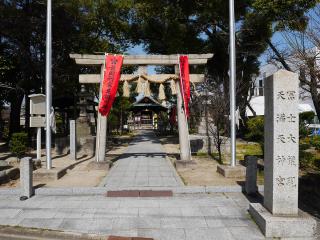
Western Area
Fujigonensha (Arako Castle)
A monument was erected on the site of Arako Castle, where Toshiie Maeda resided. Arako Castle was originally built during the Tenbun era by Toshiie's father, Toshimasa. It was a small castle with a moat, covering an area of approximately 68 meters east-west and 50 meters north-south, resembling a mansion. Toshiie became the lord of Arako Castle in the 12th year of the Eiroku period (1569) and enshrined the Fuji Gongen as the protective deity of the castle. The Deities were "Princess Konohanasakuya no kami" and "Sugawara no Michizane", who is regarded as an ancestor of the Maeda family.` See More
A monument was erected on the site of Arako Castle, where Toshiie Maeda resided. Arako Castle was originally built during the Ten…See More
-

Western Area
Nakamura Park
A Japanese-style park where you can enjoy the waterside Nakamura Park was established based on the Hokoku Shrine, which was established in 1885 to celebrate the birth of Taiko (retired imperial advisor) Toyotomi Hideyoshi. The park contains a Japanese style garden with a path around a central pond, mounds and trees. The park also has the Toin Tea Room, which is a fragrance garden and is known as a scenic spot for wisteria. In addition, there are Nakamura Park Culture Plaza, containing the Nagoya Hideyoshi & Kiyomasa Memorial Museum, which introduces Hideyoshi and Kato Kiyomasa, a warlord born in the Owari district, and the era in which they were actively involved; Nakamura Shogekijo (little theater); and Nakamura Library. The Taiko Festival is held at Hokoku Shrine on May 18 annually. See More
A Japanese-style park where you can enjoy the waterside Nakamura Park was established based on the Hokoku Shrine, which was es…See More
-
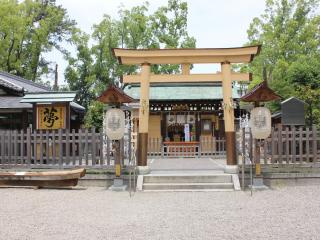
Western Area
Toyokuni-jinja shrine
A shrine dedicated to Lord Toyotomi Hideyoshi, it was founded in 1885 at its current location with the strong will of local residents, as the Edo period came to an end and the Meiji period began. See More
A shrine dedicated to Lord Toyotomi Hideyoshi, it was founded in 1885 at its current location with the strong will of local resid…See More
-

Western Area
Arako Kannon Temple
Arako Kannon Temple (Jokaizan Enryuin Kannonji Temple) is one of the four major Kannon temples in Owari, and is a Tendai Sect temple named Kannonji. It is also famous for housing 1,250 Buddhist statues made by Enku. Arako Kannon Temple is said to have been built in 729, and was repaired by the lord of Kaga, Maeda Toshiie, in 1576. The tahoto (two-storied pagoda) was reconstructed in 1536, and is the oldest wooden structure in Nagoya. It has been designated as one of the nation's important cultural properties. See More
Arako Kannon Temple (Jokaizan Enryuin Kannonji Temple) is one of the four major Kannon temples in Owari, and is a Tendai Sect tem…See More
-

Western Area
Currently Closed
D. Museum (Daiichi Museum)
A fine arts museum with the foremost glass collection in the Chubu region A glass art museum that opened in May 1997 with the aim of being a different kind of art museum. The permanent exhibition is made up of Arts Nouveau pieces, including pieces by late 19th century artist Emile Galle that were shown at the world fair, and powerful works by Dale Chihuly, the foremost pioneer of modern glass art and America's first Living National Treasure. Get a taste of each of these cultures through works by contemporary and modern masters. There are also special exhibitions and introductions of up-and-coming artists from around the world. See More
A fine arts museum with the foremost glass collection in the Chubu region A glass art museum that opened in May 1997 with the …See More













